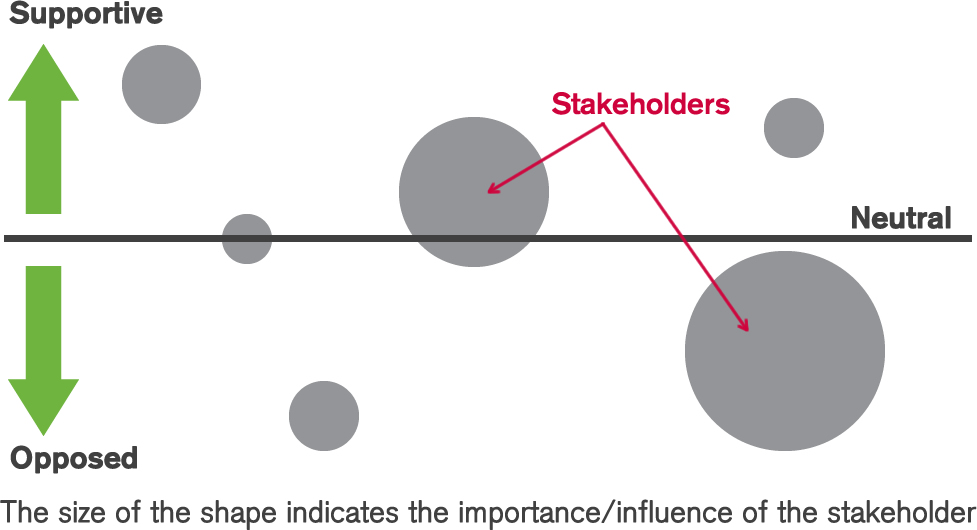- Mike Titchen
- January 13th, 2015
Despite a whole raft of tools and techniques in Lean Six Sigma, one of the absolutely key factors in the success of any project or implementation is plain old popularity. You may have data on your side but without the vocal support of those in a position of influence your foray into the world of Lean Six Sigma will be difficult, unpleasant and ultimately fruitless.
Now, even with facts and figures supporting the benefits of Lean Six Sigma, gaining the support you need can be a challenge. People will always take the path of least resistance, and generally means leaving things as they are. The responsibility is on you, as a Lean Six Sigma practitioner, to use your charm and charisma to illustrate that there is a better way. To show that if you are not continuously improving and moving forwards, you’re actually going backwards.
The challenge is in identifying who you need to get on your side, and working out what makes them tick.
Luckily (and unsurprisingly) Lean Six Sigma has got a tool for that!
Stakeholder Analysis

Clearly the team you’re working with, the people who the process belongs to and department or function managers are all stakeholders. However, there may also be people that are not immediately obvious so think laterally about how your project and the process in question impact people within the business.
Measuring influence
This next step involves defining the current level of support and influence of your stakeholders, and it can be an eye-opening experience.

From here, it’s easy to decide how much you need to increase each person’s support by. Focus on those with most influence, but be realistic; not everyone is going to be 100% supportive.
Strategise
It’s time to strategise about how you are going to get these stakeholders to come around to your way of thinking. One of the best approaches is known as the 3Ds. The first D stands for Data, this means using the hard facts and figures you have to convince the stakeholder of the importance of the project, from a logical perspective.
The second D stands for Demonstrate and compels you to illustrate where Lean Six Sigma has been used to deliver improvements elsewhere. Finally, Demand they support the project by asking someone in authority to persuade them to get on board.
Develop action and communication plans for your individual stakeholders, using what is important to them as a convincing tool. It is essential to take a different approach to each person, as what works with one person may alienate another.
While Stakeholder Analysis seems straightforward – easy even – it is anything but. It relies on understanding the softer side of business, of personal influence and how communication impacts success. This can be tough for anyone who went into Lean Six Sigma for their strengths in data analysis as people are not as predictable as numbers.
However, done well and carried through to execution, a proper Stakeholder Analysis is a major element in gaining organisational support and, ultimately, success.
[fusion_builder_container hundred_percent=”yes” overflow=”visible”][fusion_builder_row][fusion_builder_column type=”1_1″ background_position=”left top” background_color=”” border_size=”” border_color=”” border_style=”solid” spacing=”yes” background_image=”” background_repeat=”no-repeat” padding=”” margin_top=”0px” margin_bottom=”0px” class=”” id=”” animation_type=”” animation_speed=”0.3″ animation_direction=”left” hide_on_mobile=”no” center_content=”no” min_height=”none”][fusion_button link=”https://www.100pceffective.com/newsletter/” color=”custom” size=”” type=”” shape=”” target=”_self” title=”” gradient_colors=”#6eb43f|” gradient_hover_colors=”#404040|” accent_color=”” accent_hover_color=”” bevel_color=”” border_width=”1px” shadow=”{{shadow}}” icon=”” icon_divider=”yes” icon_position=”left” modal=”” animation_type=”0″ animation_direction=”down” animation_speed=”0.1″ alignment=”left” class=”” id=””]Join our newsletter to keep up to date with our latest offers[/fusion_button]
[/fusion_builder_column][/fusion_builder_row][/fusion_builder_container]
